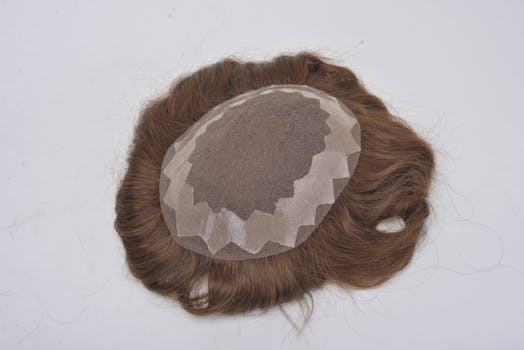Whether you’re dealing with thinning at the crown, a receding hairline, or total loss, hair loss wigs for men can offer a fast, non-surgical way to restore a natural-looking head of hair and confidence. This practical overview walks through types of systems, how they’re fitted and maintained, and how to choose between options like full wigs, hairpieces, mens wigs for baldness, and traditional toupees for men.
Wigs for Men With Hair Loss: Types and materials
Men’s hair systems fall into three broad categories by material and construction: human hair, synthetic fiber, and hybrid blends. Human hair gives the most realistic texture and styling versatility but costs more and requires care similar to natural hair. Synthetic wigs are lower-maintenance and retain shape after washing, though they can look less natural up close. Lace-front and skin-top constructions influence how a system attaches and how seamless the hairline appears.
Common options
- Full-cap wigs — cover the entire scalp and are ideal for more extensive hair loss.
- Partial pieces and toupees for men — cover specific areas like the crown or frontal region and blend with existing hair.
- Custom hair systems — tailored to head shape, color, and hair density for the best match.
Choosing the right fit and style
Comfort and realism come from a good fit. Clinics and reputable retailers measure head circumference and assess hairline shape. Base materials range from breathable monofilament to polyurethane “skin” bases that mimic scalp appearance. Consider lifestyle factors: if you swim or sweat heavily, synthetic fibers or systems with secure adhesive options may be better. For daily wear, look for lightweight bases with ventilation to reduce itching or irritation.
Attachment methods
Attachment options include tapes, liquid adhesives, clips for temporary use, or surgical implants for permanent solutions (a different pathway). Adhesive systems provide a secure bond for active lifestyles, whereas clips are handy for people who remove their pieces nightly. Regular maintenance appointments are recommended for adhesive removal and base replacement when edges wear.
Care, maintenance, and longevity
How long a wig or hairpiece lasts depends on material quality and care routine. Human hair systems can last 6–12 months or more with proper cleaning, conditioning, and professional maintenance; synthetics typically have a shorter lifespan. Gentle sulfate-free shampoos, periodic conditioning, and avoiding heat on synthetic fibers extend life. Routine salon visits for re-knotting, base repairs, or color-matching help maintain realism.
Cost considerations and budget-friendly tips
Prices vary widely: off-the-shelf mens wigs for baldness start at lower price points, while fully custom human hair systems are a significant investment. Factor in recurring costs like adhesives, cleaners, periodic professional servicing, and eventual replacement. If budget is a concern, consider a hybrid approach: a high-quality partial piece blended with your remaining hair, or synthetic options with realistic styling.
When to consult a professional
Consult a certified stylist or a hair restoration clinic when you want a precise color match, natural hairline design, or advice on durable attachment methods. They can also advise whether medical options or surgical routes might be more appropriate for your goals. For medical information about underlying causes of hair loss and treatment options, reputable resources like the National Institute of Arthritis and Musculoskeletal and Skin Diseases provide clear overviews you can review at NIAMS: Hair Loss overview and treatment information.
For people considering other cosmetic procedures as part of a broader appearance plan, it can be helpful to understand recovery expectations for different surgeries; for example, reading a detailed rhinoplasty recovery timeline and what to expect after nose surgery can inform how you schedule appointments and downtime if combining treatments.
Pros and cons at a glance
- Pros: instant results, non-surgical, customizable, suitable for many degrees of hair loss.
- Cons: recurring cost, maintenance required, variable longevity, potential for fit or comfort issues if not fitted properly.
Quick tips for first-time buyers
- Get professionally measured and color-matched.
- Ask for a trial or return policy before committing to a full custom piece.
- Budget for upkeep: adhesives, cleansing kits, and regular servicing.
FAQ
Q: How long do mens wigs for baldness typically last?
A: Lifespan depends on material and care. Synthetic systems can last several months with regular use; quality human hair systems paired with proper maintenance often last 6–12 months or longer.
Q: Are toupees for men conspicuous?
A: When professionally fitted and color-matched, toupees for men can be very natural-looking. Lace fronts and monofilament tops create realistic hairlines and scalp appearance, minimizing detectability.






